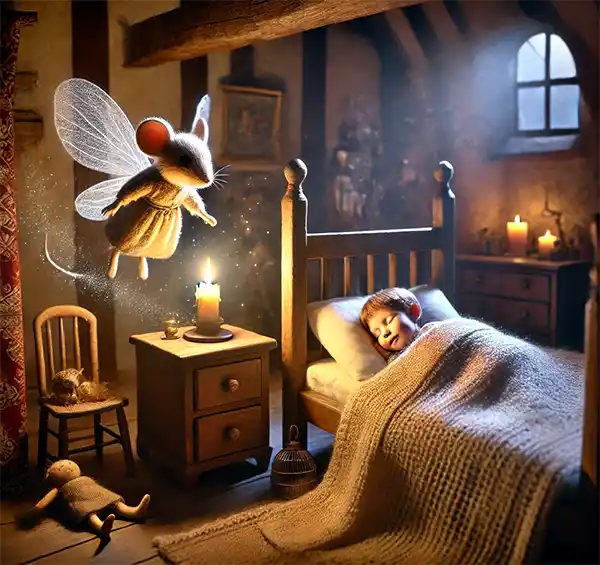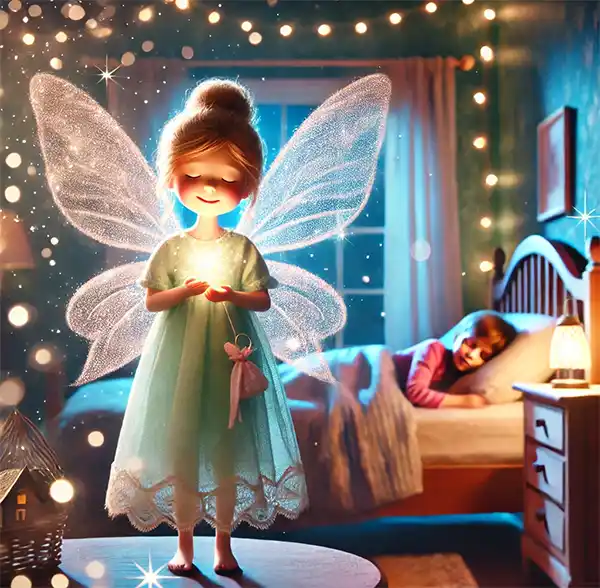A Celebration of Tiny Winged Economists
Every year, National Tooth Fairy Day gives children (and nostalgic adults) a reason to celebrate one of the most whimsical figures in folklore—the Tooth Fairy. This beloved tradition, observed on February 28th and again on August 22nd, is a lighthearted reminder of childhood magic, generous fairies, and the ever-evolving economy of lost teeth.
 But where did this tiny, coin-dispensing creature come from? And why do we willingly trade our pearly whites for pocket change? Let’s sink our teeth into the fascinating history, strange traditions, and undeniable humor surrounding the Tooth Fairy’s financial empire.
But where did this tiny, coin-dispensing creature come from? And why do we willingly trade our pearly whites for pocket change? Let’s sink our teeth into the fascinating history, strange traditions, and undeniable humor surrounding the Tooth Fairy’s financial empire.
A Brief History of the Tooth Fairy
The idea of children losing teeth and receiving a reward in return isn’t just a modern invention; it’s an ancient tradition with surprisingly global roots. Across different cultures and time periods, societies have placed great importance on baby teeth, often believing they held mystical or symbolic significance. Some traditions viewed baby teeth as good luck charms, while others feared they could be used for dark magic if they fell into the wrong hands. Over time, these customs evolved, eventually paving the way for the benevolent Tooth Fairy we know today. Though her origins are scattered among various legends and practices, her role as a magical figure rewarding children for their lost teeth has made her one of the most universally recognized childhood icons.
The Origins of Tooth-Loss Superstitions
Long before kids began waking up to find quarters under their pillows, different cultures had their own tooth-related customs:
- Vikings Valued Teeth as Charms – In Norse culture, children’s teeth were thought to bring good luck, especially in battle. Warriors would wear them as talismans for strength. So yes, Viking warriors might have been charging into battle with a necklace of baby teeth. Intimidating? Absolutely.
- Medieval Europe and Rodents – In some European countries, baby teeth were buried to prevent witches from using them for nefarious purposes. Others believed a small animal, like a mouse, would come to collect them, encouraging strong adult teeth in return (hence why some cultures still have a "Tooth Mouse" instead of a fairy).
- The 18th-Century French and Spanish Connection – France had La Petite Souris (The Little Mouse), a tiny rodent who swapped teeth for gifts. Meanwhile, in Spain and Latin America, a similar character, El Ratoncito Pérez, continues to visit children today.
The Birth of the Modern Tooth Fairy
The modern Tooth Fairy, as we know her, emerged in the early 20th century in the United States, influenced by fairy lore and the growing trend of rewarding children for milestone achievements. While the concept of trading teeth for gifts had existed in various forms, the Tooth Fairy as a distinct entity only gained mainstream popularity in the 1920s.
- 1920s: The Tooth Fairy made her first recorded appearance in American parenting magazines, offering a fun, magical alternative to older European traditions.
- 1949: Esther Watkins Arnold solidified the character by writing a children's play titled The Tooth Fairy, helping the idea gain traction across the country.
- 1950s & 60s: With the rise of consumer culture, the idea of the Tooth Fairy took off, paralleling other childhood fantasy figures like Santa Claus and the Easter Bunny. Parents eagerly embraced the tradition as a way to make the sometimes-traumatic experience of losing a tooth into a joyous milestone.
Today, the Tooth Fairy is a staple of childhood, celebrated not just in the U.S. but in many parts of the world. Though her methods of operation may differ from place to place, her mission remains the same: exchange lost teeth for small rewards and keep the magic alive.
 The Economics of Baby Teeth - A Pricey Exchange
The Economics of Baby Teeth - A Pricey Exchange
The Tooth Fairy’s financial habits have been under close scrutiny for years. Banks don’t accept her currency, but research suggests she’s been hit hard by inflation. And let’s be honest—what started as a simple exchange of loose change for teeth has quickly turned into a mini financial negotiation between parents and kids.
There was a time when children excitedly woke up to a shiny quarter under their pillow. Fast forward to today, and some kids are raking in $5 or more per tooth! The Tooth Fairy's generosity seems to depend on regional economics, parental forgetfulness, and whether or not she was carrying cash that night.
- In the 1950s, the going rate was around 25 cents per tooth.
- By 1990, that number had climbed to a dollar.
- In 2024, the average payout is a whopping $5.36 per tooth, according to the latest Tooth Fairy Index (yes, that’s a real thing).
Of course, not all kids receive the same amount. Some wake up to crisp $20 bills, while others get a handful of change (or worse, an IOU note when parents forget).
Fun Facts About the Tooth Fairy
While the Tooth Fairy remains a beloved figure in children’s folklore, there are plenty of weird and wonderful facts about her that many people don’t know. Whether it’s her global variations or the quirky excuses parents come up with when she "forgets" to show up, there’s no shortage of entertaining tidbits.
- She Collects a LOT of Teeth – The average child loses 20 baby teeth, meaning the Tooth Fairy is handling millions of teeth every night. Talk about a busy schedule!
- There’s No Universal Tooth Fairy Look – Some kids picture her as a Tinkerbell-like sprite, while others imagine a tiny dental professional with a lab coat.
- Some Countries Have Multiple Tooth Fairies – In some places, different fairies are assigned to different types of teeth.
- Forgetting is Common – Many parents admit to forgetting to place money under the pillow, leading to creative excuses like:
- "The Tooth Fairy was on vacation."
- "The dog must have scared her away."
- "She ran out of cash and will return tomorrow!"
- Not All Kids Accept Cash – Some parents have reported children rejecting money and demanding toys, gift cards, or even stock investments instead. (We may be raising a generation of tiny financial advisors.)
The Magic of the Tooth Fairy Lives On
Despite changing times, the Tooth Fairy remains a beloved part of childhood—a tiny, mystical figure who rewards kids for their dental milestones. Whether she’s leaving shiny quarters, crumpled dollar bills, or high-value cryptocurrency, she continues to be a symbol of excitement, mystery, and maybe even a little financial education.
So, on National Tooth Fairy Day, take a moment to appreciate the magic—and maybe stash a few coins under your pillow, just in case she still makes house calls for nostalgic adults.
Happy National Tooth Fairy Day!
Please Share our Content






 But where did this tiny, coin-dispensing creature come from? And why do we willingly trade our pearly whites for pocket change? Let’s sink our teeth into the fascinating history, strange traditions, and undeniable humor surrounding the Tooth Fairy’s financial empire.
But where did this tiny, coin-dispensing creature come from? And why do we willingly trade our pearly whites for pocket change? Let’s sink our teeth into the fascinating history, strange traditions, and undeniable humor surrounding the Tooth Fairy’s financial empire. The Economics of Baby Teeth - A Pricey Exchange
The Economics of Baby Teeth - A Pricey Exchange








 "Sláinte!" is a traditional Irish expression used as a toast, equivalent to "Cheers!" in English.
"Sláinte!" is a traditional Irish expression used as a toast, equivalent to "Cheers!" in English.